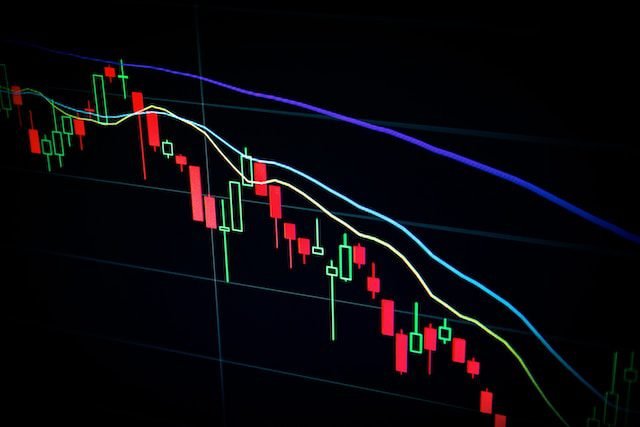Two US banks, Silicon Valley Bank (SVB) and Signature Bank, failed this month. A run on SVB’s deposits caused by losses in its securities portfolio led to the US regulator to close the tech company-focused bank. SVB specialised in serving IT firms. A similar risk existed for Signature Bank, which had numerous clients in the cryptocurrency industry. These closures brought back memories of the 2008 financial crisis and raised concerns about the banking industry, even though they were the result of specific decisions made by these banks, such as an excessive reliance on securities for returns and a concentrated customer base, among others.
Previous failures
The 2008 US financial crisis ravaged the country’s banking sector and had a ripple effect on the global economy. 465 American banks with $689 billion in assets closed between 2008 and 2012. The Dodd-Frank Act, which sought to make the system safer for depositors and less burdensome for taxpayers, was passed by the Barack Obama administration in 2010. Stress tests were performed on banks that had been declared “too big to fail” and regulations were strengthened.
Since then, there have been fewer US bank failures than ever before, with no closures reported in 2018 through 2021 and 2022. Even the size was modest, with $333 million on average in assets. Following lobbying by banks, notably SVB, the Donald Trump administration loosened some Dodd-Frank regulations in 2018. With $319 billion in combined assets, Signature and SVB were almost at the height of the 2008 financial crisis. Yet, in contrast to today, 2008 was characterised by subpar asset quality and significant leverage.
Deposit Growth
The biggest bank failure since 2008, when Washington Mutual declared bankruptcy with $188 billion in deposits, occurred with SVB. Washington Mutual’s banking operations and deposits were purchased by JPMorgan Chase. While having fewer deposits ($89 billion) than SVB ($175 billion), Signature Bank still outperformed all other banks that failed during the 2008 financial crisis, with the exception of Washington Mutual.
Through the pandemic, SVB’s deposits increased dramatically, rising from $61.8 billion in 2019 to $189.2 billion by the end of 2021. The majority of its customers, venture capital funds and tech companies, were primarily responsible for this rapid expansion. Similar to this, the growth of cryptocurrencies helped Signature Bank. $16.5 billion of its $89 billion in deposits came from clients with an interest in digital assets. Deposits increased by 21.7% in 2020, 10.6% in 2021, and 5.4% in 2022 for the US banking sector as a whole, according to the US Federal Deposit Insurance Corporation.
Insurance Protection
Much of SVB’s deposits were held in long-term debt instruments, which were safe but were losing money as a result of a string of interest rate increases. Selling these debt instruments would have required suffering a significant loss because depositors were in a panic and rushing to withdraw their money. The fact that 94% of SVB’s deposits and 89% of Signature Bank’s deposits were uninsured contributed to the panic.
These American banks had some of the largest percentages of estimated uninsured domestic deposits among those with assets exceeding $50 billion. S&P Global Market Intelligence statistics show that four additional banks had a deposit component that was over 70% and three other institutions that was over 80% uninsured. It’s crucial to remember that compared to SVB (94.4%) and Signature (93.3%), the other three banks in the 80% bracket had a substantially lower percentage of deposits retained to maturity.
Primary Uncertainty
When SVB revealed that it had lost $1.8 billion on the sale of securities worth $21 billion, its collapse quickened. Because its clients, startups and VC firms, were flush with cash during the most of the pandemic, the bank had a low loan-to-deposit ratio. SVB used these funds to buy securities, but when the US central bank started hiking interest rates to combat inflation, the value of those securities fell. SVB wasn’t the only bank affected by this.
According to FDIC data, American banks had investment security unrealized losses of $620 billion as of December 2022. One of the reasons the US banking industry is under scrutiny and the rating agency Moody’s has changed its outlook to “negative” is because of this. In order to provide investors a clearer picture, it has also raised pressure on the US accounting regulator to reform accounting regulations. As of the end of 2020, US banks had $620 billion in unrealized losses on investment assets, compared to $119 billion in unrealized gains.
Tech Screams
Optimism surrounded SVB’s $1.8 billion loss when it was disclosed. Yet, it was doomed when clients began making significant amounts of deposits withdrawals. In addition, the pressure from rising interest rates was also felt by the tech industry, private equity, and venture capital in general.
Dealmaking was active up until mid-2022. Then, in June, when US central bankers announced the first of a series of three-quarter-point interest rate increases—and their counterparts around the globe followed suit—banks withdrew from funding leveraged transactions and deal-making dropped off a precipice, dragging exit and fund-raising totals down with it, according to Bain & Company’s most recent Global Private Equity Report. All eyes are now focused on the US government, particularly its central bank, to determine whether it effectively handles the larger banking system.





